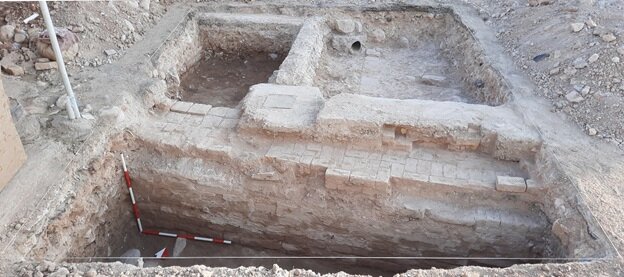Qasr-e Shirin linked Babylon to Iranian heartland, survey suggests

TEHRAN—New evidence suggests that Qasr-e Shirin in western Iran was once a bridge between Babylon and the Iranian heartland during ancient times.
“A recent survey indicates that Qasr-e Shirin played a vital role in connecting Babylon (Mesopotamia) to the inner and eastern regions of Iran from the Median to Sassanid eras, said Yadollah Heidari Babakamal, who led the archaeological survey,” CHTN reported on Wednesday.
Archaeologists recently completed the survey at Saheli Street of the Qasr-e Shirin in the western Kermanshah province, the report said.
The greatest importance of Qasr-e Shirin during the Sassanid era can be attributed to the presence of King Khosrow Parviz, who built a complex of palaces, castles, religious buildings, and a water supply system in the area, he noted.
Though it appears that these buildings were used during the early Islamic centuries (Umayyad and Abbasid eras), Qasr-e Shirin’s architectural and historical remains go beyond the mentioned periods, he added.
The remains of the architecture and clay pieces discovered during the excavation suggest that these works are not related to one building and are likely to be related to several buildings that served a variety of purposes during the Sassanid period as well as the late Islamic era, he explained.
Earlier this month, the provincial tourism chief Mohammadreza Soheili announced that the underway archaeological survey in Qasr-e Shirin aims to study and explore the antiquity of the city and the relics discovered during previous excavations.
A budget of 3.1 billion rials ($11,000) has been allocated to the project, the official added.
The ancient city of Qasr-e Shirin has always played a pivotal role because of its strategic geographical position and its location on the Silk Road; as a crossroads, it connected ancient Persia’s plateau from East, including Rey, Hamadan, and Kermanshah to Western civilizations such as Chaledea and Babel.
The city was a metropolitan during the Sassanid era (226-651 CE). Qasr-e Shirin, a city with over 2000 years of history, was famous for being the city of love. Khosrow II, known as Khosrow Parviz (590 to 628 CE), the twenty-second Sassanid king, built a castle for his lifelong beloved Shirin in the city. The folklore has it that Shirin was the daughter of the Queen of Armenia who fell in love with the Sassanid king. Shirin followed her love to Khosrow and settled in Qasr-e Shirin, before sending a messenger to the King in Ctesiphon informing him of her move.
The king, who was engaged in a battle with the invading Arabs, decided to build a palace for his beloved Shirin. The story of this love has become the most famous classics in Kurdish and Persian literature, and the great poet Nizami Ganjavi has created his epic tragedies ‘Khosrow and Shirin’ and ‘Shirin and Farhad’ based on the two different versions of the story.
The rivalry between the powerful king who was victorious in his wars with the Byzantine Empire and Farhad, a master stone carver, who carved the palace of Shirin on the hard rocks of Mount Bisotun and fell in love with the queen provides a pretext for Nizami to explore various psychological, spiritual, and philosophical aspects of the human being. The discourse between Khosrow and Farhad is considered one of the literary masterpieces of the world.
ABU/AM
Leave a Comment